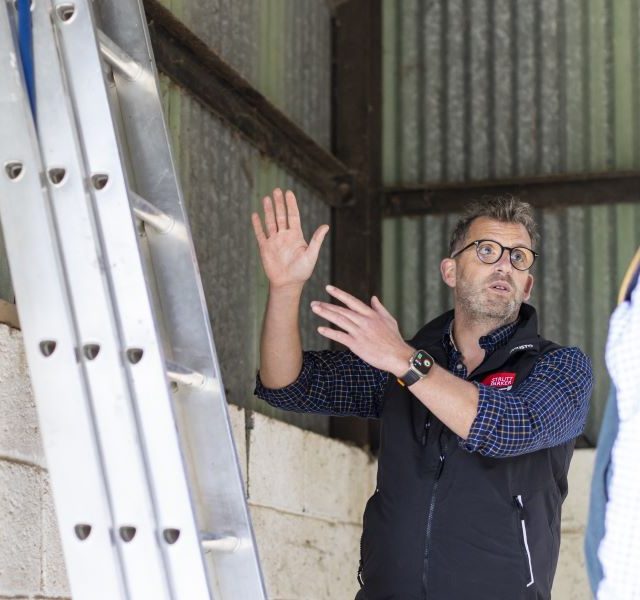Land Business Update | Week Commencing 18th October
Welcome to our update on key land management, farming, planning and energy issues.
FARMING
Nitrogen fertiliser issues
Our farming team’s view is that although political intervention may alleviate the supply shortage, it is unlikely that fertiliser prices will drop very much, if at all. Therefore, it is recommended to review the recommendations in RB209 and check the most cost-effective application rates for your crops. This is as the recommendations in RB 209 are insensitive to changes in the value of the crop produced or the cost of nitrogen fertiliser, and so the breakeven ratio between crop yield (in kg) needed to pay for 1 kg of nitrogen can change significantly. Please contact Jonathan Armitage (England) or Mary Munro (Scotland) if you would like to discuss this.
Yorkshire Post Countryside Week Conference
We were delighted to support the Yorkshire Post’s Conference last week. Richard Taylor, our head of farming in our Northallerton office, and Jason Beedell, our rural research director, spoke in a session on the challenges that lay ahead as farm payments are being phased out. Minette Batters, the head of the NFU, also spoke in the session, a recording of which is available to watch here. If you would like to discuss farming in and around Yorkshire, please contact Richard Taylor at richard.taylor@struttandparker.com or 07702 317287.
Legumes and pollinators
Recent research has shown that sowing legume species which have different flowering times and flower structures will support a wider suite of pollinating insects and provide them with forage over a longer period. The legume mix should be managed to enhance flowering, for instance by strip or mob grazing. However, to ensure that pollinators have all their resource requirements met, legumes should be used in combination with other measures such as flowering hedgerows and trees, open flowers, dead wood, ditches, ponds and undisturbed tussocky field margins for nesting and overwintering habitats. It is important to know that sowing lots of different species will not necessarily attract a greater number of pollinator species. Instead, focus on providing a range of flowers from spring to autumn. The research also suggests planting tall, competitive legume species, such as field beans and vetches, in separate patches as they can prevent other species from flowering.
Harriet Ross wins Farmers Weekly young farmer of the year
We are delighted that Harriet Ross, a former Strutt & Parker farming consultant, won this year’s award. Harriet decided to concentrate full-time on her career in farming earlier this year. With her partner, she recently bought a neighbouring pig farm, which she is managing alongside her existing farm and a livery diversification. As part of her management, she is keen to understand the carbon footprint of her enterprises and sustainability. We wish her the best of luck in her present and future endeavours.
FARMING AND THE ENVIRONMENT
Environmental Land Management (ELM) and Local Nature Recovery Strategies
These strategies are going to be important, as they are likely to be relevant to the design of the Local Nature Recovery tier of the Environmental Land Management scheme. The strategies are new and will operate in all areas in England. Each strategy will, for the area that it covers:
1 . Map the most valuable existing habitat for nature
2 . Map specific proposals for creating or improving habitat for nature and wider environmental goals
3 . Agree priorities for nature’s recovery
It is not yet decided who will be the ‘responsible authority’ to lead production of each strategy but we expect it to be local authorities. Defra set up five LNRS pilots in August 2020, which ran until May 2021. The report on the pilot areas is interesting and makes a number of points that are likely to be relevant to the design of the Local Nature Recovery tier of ELM. The key ones we took are:
- Land managers’ role as stakeholders and key delivery partners must be recognised.
- Local conveners performed a valuable role in bringing land managers into the process. S&P comments: we hope there are local conveners across England. This would be similar to the way the original.
- Countryside Stewardship Scheme was organised, which worked well.
- Stakeholders want a delivery plan that sets out how to implement the potential measures identified in the LNRS.
The government is currently consulting on how they should be implemented as the government’s plan is to introduce them swiftly after the Environment Bill becomes law.
ELM – findings from Defra-funded agroforestry test project
The area of the UK used for agro-forestry, which is integrating trees and shrubs into farming systems, is expected to increase significantly from its current very low level (3.3% of land area) under UK net zero plans. If it is to do this, the current barriers that are stopping its wider adoption need to be overcome. This project explored the barriers and found that most are related to knowledge (i.e., farmers do not feel they know enough about agroforestry to plant an efficient agroforestry system) and finance (i.e., concerns about the long-term costs of agroforestry and financing it). The project team make the case for agroforestry to be properly supported by policy and grants to incentivise its adoption, and a substantial investment in agroforestry knowledge, including farm and forestry advisory services.
ELM – findings from Defra-funded natural flood management test project
This interesting test & trial looked at what land managers need to encourage them to take up natural flood management (NFM) options in an agri-environment scheme. NFM measures include creating space for water to accumulate during floods (using leaky dams, offline pools), measures to slow the flow of water down (using cover crops and tree planting), and measures to reduce erosion (such as fencing livestock out of watercourses and contour ploughing). It found that:
- Land managers need support to identify the best place to locate NFM features. This works at two scales – identifying catchments where NFM will be effective and then, for land managers, where to actually carry out the NFM actions.
- In addition to the above, land managers then need better advice and guidance to make decision making easier. This includes simplifying the processes for getting consents and permissions. The report recommends that catchment based advisers are deployed in target areas and a ‘communication tool’ is developed to help simplify the decision making process.
- Finally, payment rates need to incentivise farmers and also reflect the multiple benefits derived from NFM measures, not just the flood alleviation benefits.
PROPERTY AND RURAL ECONOMY
House rents increasing by 5% a year – the highest rate since 2008
Zoopla’s most recent UK Rental Marker Report indicates that the UK rental sector excluding London is experiencing a surge in demand, with average monthly rent now sitting at £943. Annual rental growth is at 5%, its highest level since 2008. The rise is believed to be the result of people returning to work in towns and students returning to universities. Rental demand is higher than supply, with demand up 19% compared with this time last year and supply down 13%. Investments in buy-to-let properties have experienced a decline since the introduction of the additional 3% stamp duty back in 2016, which is contributing to the pressure on rent levels. The stock of rental properties is expected to remain low nationally for the foreseeable future.
Government should take action to make rural areas attractive to live in for young people
Few incentives are being offered to young people to encourage them to stay in or come to rural areas and little is being done about it, according to a recent survey by CPRE, the countryside charity, involving 1,000 young people living in rural areas. It found that only 2 in 5 of those young people anticipate staying to live in a rural area within the next five years. It comes as no surprise as the survey found that living in rural areas means overcoming widely known challenges such as, but not limited to, poor public transport leading to sentiments of isolation, housing pressures and poor digital connectivity. This also means that young people find that there is a lack of employment opportunities in the rural areas, driving them away from it and pushing them to move to towns and cities. Despite many of them campaigning for their voice to be heard, 62% of survey participants believe that decision makers do not pay enough attention to rural areas. CPRE wishes for the government to pay more attention to and spend more resources on revitalising our rural areas for the sake of the young generation who are the future of rural communities, as part of the government’s plan to ‘level up’.






